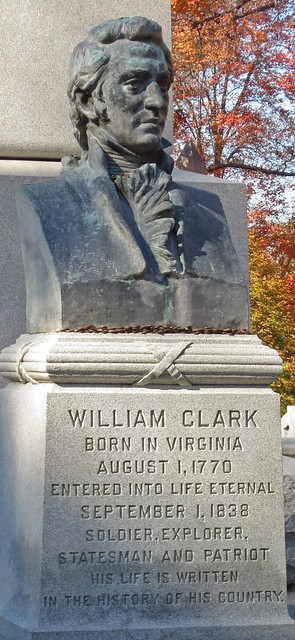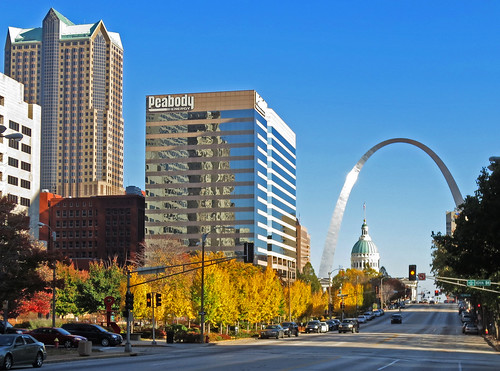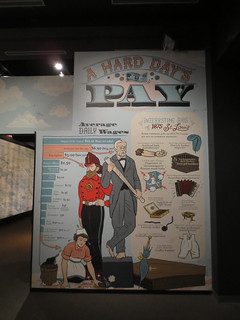Bellefontaine is more of a tourist attraction than I expected. At the office, there are brochures for self-guided tours of famous folks, beautiful trees and Civil War veterans.
Most people looking for William S. Burroughs are probably looking for the novelist and author of The Naked Lunch. He has his own modest stone on the family plot.

The monument for his grandfather is a bit more prominent. It was placed here by grateful employees of American Arithmometer following the company's first sales convention in 1902. The company name would not be changed to Burroughs Adding Machine Company until three years later. From the company records:
At a convention of the Sales Agents, Office and Factory forces of the American Arithmometer Company, held at the Planter’s Hotel on December 27th, 1902, it was the unanimous opinion of all present that a suitable memorial should be erected to the memory of
MR. WILLIAM S. BURROUGHS,
the inventor of the Burroughs Adding Machine, as a tribute to his genius as shown in this most wonderful invention, out of which has grown one of the large business institutions of the Country, of which we are justly proud, and by which so many have been benefitted.
We believe the machine he invented will prove to be his most lasting monument, but as evidence of our appreciation we subscribe the amounts set opposite our names for the purpose of erecting a monument over his grave in Bellefontaine Cemetery, St. Louis, Mo.


I photographed all four sides of the monument:




You may notice some short lifespans on those engravings. The Burroughs family history is filled with tragedy, never very well documented. Literary biographer Simon Johnson is hard at work producing what may be the definitive biography of the novelist Burroughs. You can get a flavor for his effort from an article in the Lowell (Michigan) Ledger at this link.
We drove the full tour of the cemetery and found the memorial to Capt William Clark of Lewis and Clark to be one of the most notable. It stands at the very top of the hill, overlooking the Mississippi River.























